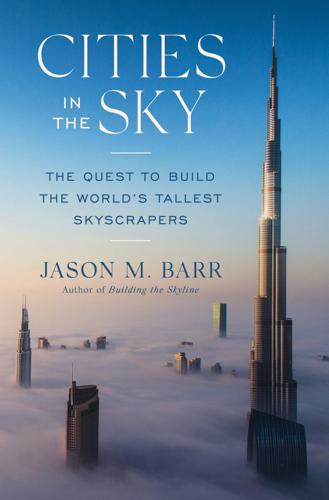
Cities in the Sky: The Quest to Build the World's Tallest Skyscrapers
by
Jason M. Barr
Published 13 May 2024
When star or “trophy” architects, such as Viñoly, Gehry, and Piano, are hired by private developers in New York City or Chicago, it’s done because they add value to the building itself—for the internal occupants—and to a lesser degree to provide something for the civic realm. Of course, developers can use their buildings to enhance their reputations, but it’s their own prerogative. In the United States starchitects are a form of charity, but in London they are tithes. Or rather, as two London School of Economics (LSE) economists, Paul C. Cheshire and Gerard H. Dericks, see it, the hiring of starchitects is a form of rent seeking—the making of a payment or the expenditure of resources solely to get access to a valuable “prize.” In fact, they found that in Chicago only 3 percent of offices were designed by trophy architects.
…
The scarcity of quality office space creates incentives to take risks and throw resources at finding ways to secure permission for buildings that would ordinarily be turned down. Despite the extra costs and fees associated with these “signature” buildings—often as high as an additional 15 percent—they are worth it. Cheshire and Dericks conclude that, on average, a starchitect’s “reputation gets an extra 14 floors on a given site. So even factoring in the extra visible costs, a [starchitect] boosts the value of a typical site in central London by 152%, apparently capturing ‘economic rents’ of £148 million.” And in that way, London’s expensive and iconic skyscraper minuet continues apace, with death rays and erotic gherkins as just part of the normal course of business.
…
Livingstone faced sharp criticism mostly from English Heritage, which, he claimed, was the “biggest threat to London’s future since the Luftwaffe.” When Prescott rejected the inquiry, Livingstone felt vindicated. The bullet shape and diagonal gray and green glass panels make the Gherkin, designed by star architect, or starchitect, Lord Norman Foster, one of the world’s most unusual skyscrapers—like a giant Fabergé egg. But it’s a success story and has emboldened London’s method of going tall. Even renowned British journalist Simon Jenkins, a harsh critic of the tall building mania, acknowledged its impact when he wrote: It won the 2004 Stirling prize [the highest award of the Royal Institute of British Architects].
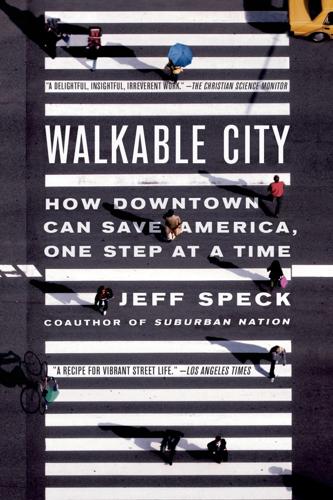
Walkable City: How Downtown Can Save America, One Step at a Time
by
Jeff Speck
Published 13 Nov 2012
Most architects also agree with this assessment publicly, even as they hope against hope for their chance to design the figural object building that will land them on the cover of a hero architect magazine. And then there are the starchitects, most of whom don’t care about figural space at all. A fairly typical battle in this war was fought at the Mayors’ Institute on City Design, when Mayor Frank Cownie presented a plan for a piece of Des Moines that was based on the Vancouver model. A collection of quirky, expressionistic towers were shown in red, sitting atop a series of block-filling bases, shown in blue, that shaped the streets beautifully. “That’s a really interesting plan,” said the one starchitect at the table. “Just get rid of the blue bits and you’ll have something special.”
…
Almost every city that has witnessed construction since 1950 has its share of cold, uninviting buildings fronting the sidewalk with rough concrete, tinted glass, or other such nastiness. Most architects have moved on from this style of building, but that is not to say that they are any more motivated to engage the pedestrian. Evidence would suggest that, among the leading starchitects, creating street life still ranks low on the list of priorities, somewhere down there with staying on budget and keeping the rain out. In most cities, however, the culprit is less likely to be a starchitect than a Rite Aid, as pharmacies and other national chains refuse to put windows where shelves can go. These standards can be overcome, but only by cities that throw off the beggar mentality and outlaw the practice.
…
We got rid of that rule first. ATTACK OF THE STARCHITECTS We’ve come a long way since the seventies, when every city endeavored to build its own version of Boston’s fortress-like City Hall, a structure that only architects love (yes, I love it). This style of architecture was called brutalism, supposedly after Le Corbusier’s béton brut—rough concrete—but the name stuck for other reasons. It was characterized by walls so abrasive they could rip your arm open. Happily, this technique is no longer in vogue, but many architects, especially the starchitects, still build blank walls where they least belong.
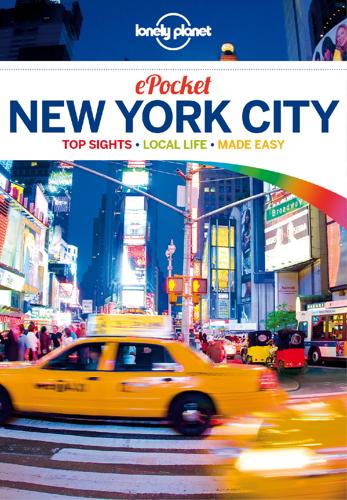
Pocket New York City Travel Guide
by
Lonely Planet
Published 27 Sep 2012
The following year, the record was broken by the Empire State Building, a clean-lined art deco monolith crafted from Indiana limestone. Its spire was meant to be used as a mooring mast for dirigibles – an idea that made for good publicity, but proved to be impractical and unfeasible. A Starchitect’s Canvas New York City’s heterogenous landscape lends itself well to the dabbling sketching pencils of some of the world’s leading architectural personalities, or ‘starchitects’ as they’ve come to be known. You’ll find Frank O Gehry’s rippling structures, SANAA’s white-box exteriors and Renzo Piano’s signature facade flip-flopping tucked between the city’s glass towers and low-rise bricked behemoths.

The Caryatids
by
Bruce Sterling
Published 24 Feb 2009
Or under the ground, in some other kind of bubble. Of course we would do it! What else could we do? This Family thinks in the long term, because the Family has to survive!” Rishi came forward. “I have Frank Osbourne waiting for you.” Freddy was glad for the change of subject. “Let’s have a word with the gentleman.” The starchitect’s avatar appeared in a corner of the Family’s situation map. “So, Frank,” said Freddy, “you’re in a simulation at the moment?” “Gotta be in a simulation,” grumbled the architect. “All the big construction business happens inside simulations.” “You didn’t notice the most recent big earthquake?”
…
“I’m logging in from Vancouver.” “No? Then let us be the first to tell you that your new showroom museum came through a major seismic event with flying colors! Congratulations.” “No kidding?” said Osbourne. “Swell!” “Except for a power outage,” Guillermo put in sourly. “I told you to let me handle the power!” the starchitect shouted. “I told you I needed full command over the grid! I told you that! I told you all that from day one!” “We did our best for you on the very difficult power issue, Frank,” said Freddy cordially. “Actual architecture differs from virtual architecture. We can’t just reconfigure everything on the fly.”
…
Obviously, in the modern Los Angeles star system, where stars were physically dominant, swaggering street presences, the gym had to become the lady’s power base. So: Radmila moved the gymnasium into the former Situation Room. Radmila hired—not Frank Osbourne, he was too much the seasoned establishment starchitect—but one of Osbourne’s best disciples, a younger woman freshly gone into her own practice. This young architect was ambitious, modish, and contemporary, and she badly needed a leg-up. Grateful for her big break, the new decorator didn’t dawdle. Radmila’s new gym was transformed. It was no longer a dusty place of clanking iron and steroidal machismo.

Radical Cities: Across Latin America in Search of a New Architecture
by
Justin McGuirk
Published 15 Feb 2014
The avant-garde – namely those too young or too academic to have surfed the PoMo office and hotel boom – withdrew into experimenting with architecture as an autonomous art form, informed by deconstructivist philosophy and complex geometry. Continue zooming through time and you’ll see the development of computer-aided drawing software and a resurgent global economy on converging tracks until – voilà! – the ‘starchitect’ is born. What happened in the first decade of the 2000s is easy to parody, and will continue to be, until a more forgiving future inevitably resuscitates the starchitects as heroes. The era of the ‘icon’, whether we mean blobs and other parametric forms or indeed icy minimalism, was the result of pure architectural form-making finally finding a globalised market. Both the corporate elite and a booming culture industry were hungry for it.
…
If architecture is just speculation, then could there be a more fitting legacy of that period than Spain’s 3.5 million empty homes? This is the capitalist drama that Tafuri had warned us about, the drama of architecture for its own sake: no ideology, no utopia. It’s so easy now, isn’t it, to blame architects for servicing an economy of the spectacle? In our mid-recession world, the starchitects are soft targets and ‘spectacle’ has become an easy epithet. But this book will take you to places that are also, in their own way, spectacular – even social housing. Affonso Reidy’s Pedregulho housing in Rio, built in the 1950s, has a curvaceous facade that was designed to make a spectacle of itself.
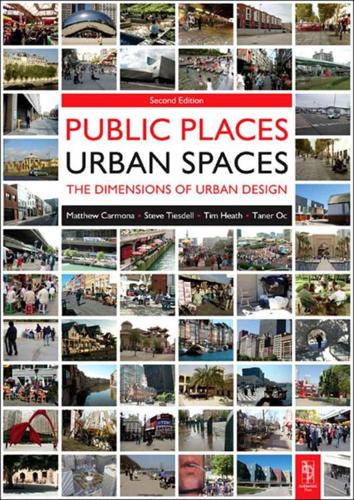
Public Places, Urban Spaces: The Dimensions of Urban Design
by
Matthew Carmona
,
Tim Heath
,
Steve Tiesdell
and
Taner Oc
Published 15 Feb 2010
Contemporary architects can thus come to be iconic on the basis of ‘paper architecture’, which is typically unbuilt (even unbuildable), yet well-known through frequent reproduction in the architectural and popular media. This is also associated with ‘signature architects’ and ‘starchitects’. Signature architects are those who place unique signatures, in the sense of recognisable features, on their buildings (Sklair 2006a: 31). Despite differing sites and contexts, the signature architect’s designs are recognisably similar and identifiable – indeed, designing a highly contextually responsive building may jeopardise their signature, which, in part, was the reason for their appointment. A contraction of ‘star’ and ‘architect’, starchitects are those architects whose celebrity and critical acclaim goes beyond the architectural world and who have some degree of fame among the general public.
…
A typical ‘formula’ for physical regeneration and renewal involves derelict industrial sites becoming heritage parks; old canals and waterfronts becoming upscale residential or restaurant quarters; obsolete warehouses becoming chic lofts, plus an iconic/signature building or two (or more) preferably designed by one of a limited number of ‘starchitects’ (see below). FIGURE 5.6 Inner Harbor, Baltimore (Image: Doshik Yang). Since its regeneration in the 1970s and 1980s, Baltimore’s Inner Harbor has spawned copycat leisure spaces around the world (Yang 2006: 102–7) The spread of this formula raises doubts about the competitive edge that can be attained.
…
A contraction of ‘star’ and ‘architect’, starchitects are those architects whose celebrity and critical acclaim goes beyond the architectural world and who have some degree of fame among the general public. As celebrity status is generally associated with delivering the ‘wow factor’, the starchitect’s designs are almost always intended to be iconic. Iconic Buildings and Civic Boosterism The principal rationale for deliberately created iconic architecture is civic boosterism, with iconicity valued as a resource for, and contributor to, place identity but also, and more importantly, as a contributor to a particular place identity. As Sklair (2006a: 36) explains: ‘Analytically, iconicity in architecture may be seen not simply as a judgment of excellence or uniqueness but like celebrity in popular culture, as a resource in struggles for meaning and, by implication, for power.’
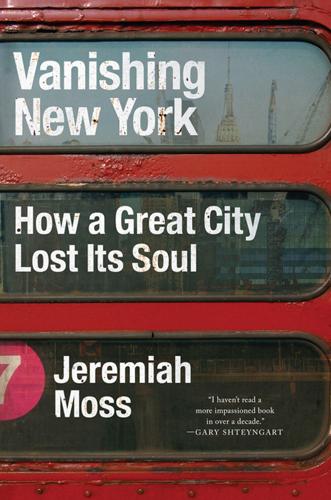
Vanishing New York
by
Jeremiah Moss
Published 19 May 2017
Dealers whispered the rhythmic incantation, “Smoke, dope, smoke, dope, shroooooms.” It was love at first sight. I had found my home, the place I’d been searching for, and moved in soon after. Much more recently, however, Astor Place has become unrecognizable. “Undulating.” That was the word that starchitect Charles Gwathmey used for his newest creation, “Sculpture for Living.” A twenty-one-story glass condo tower with a “limited collection of 39 museum-quality loft residences” priced from $1,995,000 to over $6,500,000, it began rising on Astor Place at the dawn of the new millennium. The East Village had never seen anything like it.
…
The Salvation Army was demolished at the end of 2014 to make room for a thirteen-story tower of duplexes, triplexes, and—reportedly—a car elevator that will bring residents’ vehicles right into their condos. The penthouse has been priced at $17 million. In the span of only five years, at least a dozen oversize, upscale developments had come to the old skid row. All around, the Bowery’s little side streets similarly exploded with opulence, starchitect-designed hotels and condos replacing lumber yards and mechanic shops almost overnight. The building where Jean-Michel Basquiat made art and overdosed on heroin became home to a Japanese meat store that sold wagyu beef to the new neighbors at forty to fifty dollars a pound. As the Bowery became ever richer, the symbols of its profound poverty continued to be appropriated for high style.
…
He pointed to another: “Seventy-five thousand dollars a month.” Then he pointed to a salon down the block: “One hundred and five thousand dollars a month.” Rising prices and a changing consumer demographic meant the tide was surging yet again. Even the luxury designers that had helped make the area a glittering playground could no longer survive. The starchitect-designed Whitney Museum was under construction, promising more tourists and even higher rents. But tourists weren’t buying $2,000 purses and $1,500 shirts. They wanted to shop at suburban-mall chain stores, so the chains moved in—Levi’s, Sephora, Patagonia, Uggs—while the high-end designers moved out, as many as a dozen in just a year, as soon as their decade-long leases were up.
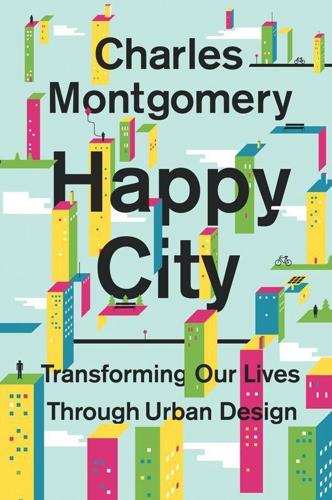
Happy City: Transforming Our Lives Through Urban Design
by
Charles Montgomery
Published 12 Nov 2013
While the world’s architectural critics and so-called thought leaders tend to focus their attention on iconic structures and rare designs, the journey to the happy city must begin out here, in the landscape of the infinitely repeated form, on the plains of dispersal. For every new urban plaza, starchitect-designed tower, or sleek new light-rail network, there are a hundred thousand cul-de-sacs out in the dispersed city. This is the environment that, more than any other, defines how Americans and millions of people in wealthy cities across the globe move, live, work, play, and perceive the world, and how millions more will live if cities return to the trajectory they were on before the crash.
…
For years, television largely depicted American family and social life as suburban, but in the past two decades the hip protagonists of programs such as Friends and Sex and the City were shown in downtown apartments. Formerly low-status neighborhoods such as Manhattan’s East Village have been invaded by the upwardly mobile, and condominium towers designed by starchitects are sprouting between the tenements. New generations are growing up with a different mental library of stories that shape their domestic tastes. Errors from Above Unfortunately, when choosing how to live or move, most of us are not as free as we think. Our options are strikingly limited, and they are defined by the planners, engineers, politicians, architects, marketers, and land speculators who imprint their own values on the urban landscape.
…
A cruise through Los Angeles illustrates the dynamic. The city’s downtown has been said to contain more parking spaces per acre than any other place on earth, and its streets are some of the most desolate. Back in the late 1990s, civic boosters hoped that the Disney Concert Hall, a stainless steel–clad icon by starchitect Frank Gehry, would pump some life into L.A.’s Bunker Hill district. The city raised $110 million in bonds to build space for more than two thousand cars—six levels of parking right beneath the hall. Aside from creating a huge burden for the building’s tenant, the Los Angeles Philharmonic (which is contractually bound to put on an astounding 128 concerts each winter season in order to pay the debt service on the garage), the structure has utterly failed to revive area streets.
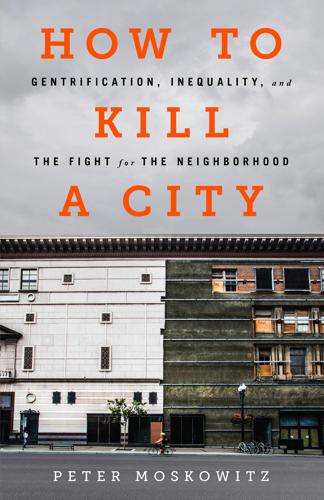
How to Kill a City: The Real Story of Gentrification
by
Peter Moskowitz
Published 7 Mar 2017
The middle-income housing on the surrounding blocks had been converted into market-rate condos. Bleecker Street, once filled with antique stores, had been overtaken by chains such as Marc Jacobs, Michael Kors, and Coach. Now, in place of buildings that reminded me of my childhood, stood beacons of wealth unprecedented in the neighborhood. Three glass buildings designed by “starchitect” Richard Meier, taller than anything around them, had sprung up a block from my parents’ house. And right across the street from my old house, a former artist’s loft and garage had been topped with pink stucco condos and rechristened “Palazzo Chupi.” When the building opened for sales in 2008, apartments sold for upward of $25 million.
…
From my parents’ building I look east, toward the rest of the Village and Manhattan. One block north of me is Westbeth, the first federally subsidized artists’ colony in the country. The building is old, tall, and gray and filled with aging artists reluctant to leave the only place they can still afford in this city. A block south are three glass condo buildings designed by “starchitect” Richard Meier. When they opened in 2004, they were a sign that things were about to change rapidly in the neighborhood: the first and second and third waves of gentrification were over, and a fourth one, filled with people who can afford $15 million apartments, was here. The Meier buildings were also some of the first glass-fronted buildings in the city.
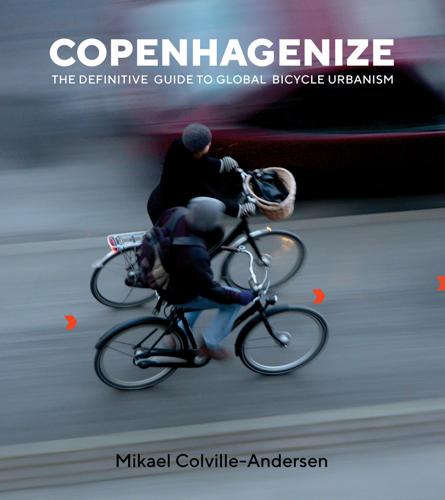
Copenhagenize: The Definitive Guide to Global Bicycle Urbanism
by
Mikael Colville-Andersen
Published 28 Mar 2018
Placemaking is a self-described movement that claims its goal is to change the world. What could possibly have more impact across all aspects of urbanism than the bicycle? One thing is moody academics pondering paving tile designs and bench aesthetics in creatively cluttered NoHo offices, another is “starchitects” who suddenly stick their noses into urban planning. Yes, you, Norman Foster. A couple of years ago, a fanciful idea came out of the British architect’s office. It was originally a student’s idea, and Norman dusted it off and thrust it rudely onto the Internet. He suggested that London build cycle tracks atop the city’s many elevated railways—he called it SkyCycle.
…
Now more than ever before, when urban planning is heading back to the future—back to when cities were life-sized places with rational and practical solutions for moving people around—ideas like SkyCycle stand out like a sore thumb. As Canadian author Chris Turner, whose book The Geography of Hope is a must-read, responded on Twitter when I criticized the idea: “You say that as if Foster and the starchitect league have ever attempted to understand how streets work in general.” Indeed. We’ll get into that later. Foster grew up in Manchester, back in an age when that city had around 30 percent modal share for bicycles. Instead of realizing that modern urban planning is seeking to return our cities to their pre-car state, he insists on dishing up city-killing Blade Runner fantasies.
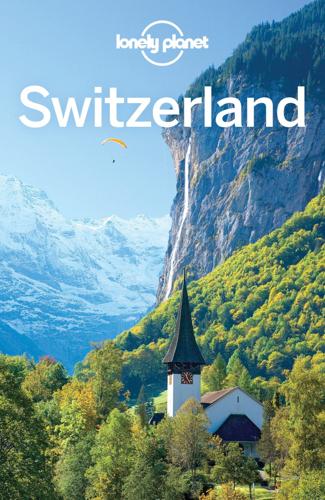
Lonely Planet Switzerland
by
Lonely Planet
To get to the pass, take a local train from Villars-sur-Ollon to Col de Bretaye (Sfr17.80, 20 minutes). 5Eating oBotta 3000SWISS€€ ( GOOGLE MAP ; %024 492 09 31; www.glacier3000.ch; Les Diablarets; mains Sfr22-52; h10am-4.30pm) The striking white-cube-design of this high-altitude restaurant atop the Glacier de Tsanfleuron is the contemporary handiwork of Swiss starchitect Mario Botta, with gastronomic dining on the top floor and a self-service terrace and picnic area below. From here, the ski back down to Reusch (1350m) is an exhilarating 2000m descent over 14km. 8Information The Office du Tourisme Les Diablerets ( GOOGLE MAP ; %024 492 00 10; www.villars-diablerets.ch; Chemin du Collège 2; h9am-6pm) is the best place to make sense of the somewhat confusing selection of pass and transport options for the area's numerous ski resorts. 8Getting There & Around Aigle is the gateway town for the Les Diablerets region.
…
Rising in a pyramid above Lake Lugano, 1097m Monte San Giorgio ( GOOGLE MAP ) has become Ticino’s mountain of myth thanks to its rich stash of Triassic marine-life fossils, which have won it Unesco World Heritage status. A four-hour, 12km circular trail takes you up from Meride. An old mule track wends through thick forest to the summit, commanding fine lake views, then you’ll descend on a path with panels detailing the fossils and their excavation sites. Revamped and expanded by Ticinese starchitect Mario Botta, Meride's Museo dei Fossili (Fossil Museum; GOOGLE MAP ; www.montesangiorgio.ch; Via Bernardo Peyer 9; adult/child Sfr12/6; h9am-5pm Tue-Sun) (Fossil Museum) showcases vestiges of the first creatures to inhabit the region – reptiles and fish dating back more than 200 million years. You're welcomed by a 2.5m long replica of a Ticinosuchus.
…
Alternatively, the one-hour scenic train ride from Chur will keep you on the edge of your seat. 2Activities Tschuggen Bergoase SpaSPA (Sonnenbergstrasse; GOOGLE MAP ; http://en.tschuggen.ch/spa; Tschuggen Grand Hotel; nonguest morning/evening pass Sfr65, massage from Sfr80; h7am-9pm) The Tshuggen Bergoase is not only a grand spa but also an architectural statement, thanks to Mario Botta, one of the country's best-known 'starchitects'. Bold, beautiful and respectful to its surrounds with its leaf-inspired forms and wood and granite textures, you could do worse than book a treatment or entry pass to this special spot. Winter Activities Arosa attracts skiers of all levels with 225km of pistes, combined with Lenzerheide, rising as high as Weisshorn at 2653m.
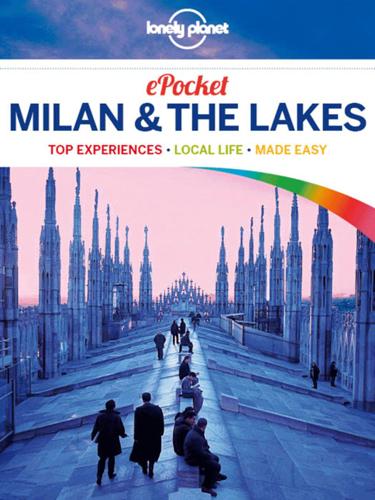
Pocket Milan & the Lakes
by
Lonely Planet
and
Paula Hardy
Published 2 Jan 2013
Built around a futuristic spiral ramp (an ode to the Guggenheim), the lower floors are cramped, but the heady collection, which includes the likes of Boccioni, Campigli, De Chirico and Marinetti, more than distracts. Interior, Museo del Novecento VITTORIO ZUNINO CELOTTO/GETTY IMAGES © Don’t Miss Palazzo dell’Arengario The austere Arengario Palace consists of two symmetrical buildings each with a three-tier arcaded facade. It was built in the 1950s by starchitects Piero Portaluppi, Giovanni Muzio, Pier Giulio Magristretti and Enrico Griffini, and is decorated with bas reliefs by Milanese sculptor Arturo Martini, whose work now features in the museum’s collection. The name arengario comes from the building’s original function as the government seat during the Fascist period, when officials would arringa (harangue) the local populous from the building’s balcony.

Plutocrats: The Rise of the New Global Super-Rich and the Fall of Everyone Else
by
Chrystia Freeland
Published 11 Oct 2012
Since 1989, half of his work has been outside the United States, including landmark buildings like the Guggenheim Museum in Bilbao. Gehry is more than an architect—he is a starchitect, a neologism coined to describe the small band of elite international architects whose personal brands transcend their buildings. He has appeared in Apple’s iconic black-and-white “Think Different” ad campaign, parodied himself on the Simpsons, and helped Arthur and his friends build a tree house on the children’s cartoon. He has even designed a hat for Lady Gaga. The difference between Bunshaft, an award-winning North American architect, and Gehry, a multimillionaire global starchitect, is the difference between living in the postwar era of the Great Compression, when the gap between the 1 percent and everyone else shrank, and living during the twin gilded ages, when globalization and the technology revolution are creating an international plutocracy and therefore a fantastically wealthy global clientele for superstars like Gehry.

City: A Guidebook for the Urban Age
by
P. D. Smith
Published 19 Jun 2012
The favoured option is a $2 billion project to rehouse the slum dwellers on the outskirts of the city and to redevelop what is now a piece of prime real estate in the city centre, initially creating five million square feet of new office and residential space and a total of forty million square feet within seven years. Just as the authorities in Boston razed the city’s West End district in the 1950s, or as Beijing has destroyed its historic hutongs, so Mumbai intends to sweep away Dharavi’s hutments and replace them with new office and residential towers designed by ‘starchitects’. But as Europe and America discovered in the 1960s and 1970s, slum clearance can create as many problems as it solves. Slums are a human and not just an architectural problem. Bulldozing tenements and shacks that offend the sensibilities of the middle classes destroys communities as well as eliminating poor housing.
…
But while some claim this is due to the remarkable publicity generated by the Museum, others point out that so far the substantial foreign investment that was anticipated has not materialised. Nevertheless, in an attempt to reproduce the ‘Bilbao effect’ by attracting the creative classes and investment to post-industrial cities, ‘starchitects’ have been drafted into other urban centres and tasked with creating dramatic new museums and cultural centres. The results, both economic and aesthetic, have been mixed. The motivation behind the planned Guggenheim Abu Dhabi, in the United Arab Emirates, is less urban regeneration than an attempt to brand a city as a high-end cultural destination.

Berlin
by
Andrea Schulte-Peevers
Published 20 Oct 2010
It’s built on terrain once bifurcated by the Wall, a short walk south of the Brandenburger Tor on the edge of Tiergarten. After 1989, big developers quickly swooped on the real estate of the former death strip (which was several hundred metres wide here) and pretty soon an international cast of ‘starchitects’, including Helmut Jahn, Renzo Piano and Rafael Moneo, got to work. Their goal: to create an urban quarter that would be as dynamic and vibrant as the historic Potsdamer Platz. Back in the early 20th century, this was essentially Berlin’s version of New York’s Times Square. Until WWII sucked all life out of the area, dapper doormen welcomed celebs and high society to fancy hotels like the Bellevue and the Esplanade.
…
Completed in 1914, WWI and the demise of the monarchy ensured that no royal would ever use the precious silver. NEUER FLÜGEL Map 320 911; www.spsg.de; Spandauer Damm; adult/concession €6/5; 10am-5pm Tue-Sun Apr-Oct, 11am-5pm Nov-Mar; Sophie-Charlotte-Platz, then 309, Richard-Wagner-Platz, then 145 The reign of Frederick the Great saw the addition, in 1746, of the New Wing by his buddy and ‘starchitect du jour’ Georg Wenzelaus von Knobelsdorff. Here you’ll find the palace’s most beautiful rooms, including the confectionlike White Hall, a former banquet room; the Golden Gallery, a rococo fantasy of mirrors and gilding; and the Concert Room filled with 18th-century paintings by French masters such as Watteau, Boucher and Pesne.
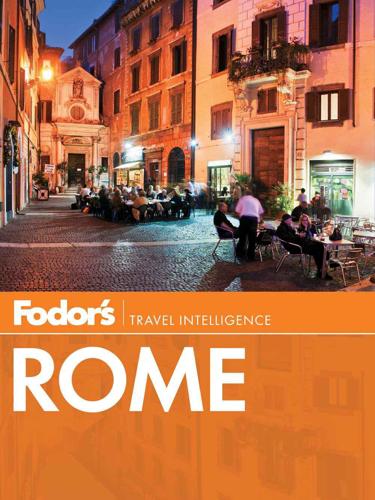
Fodor's Rome: With the Best City Walks and Scenic Day Trips
by
Fodor's Travel Publications Inc.
Published 24 Sep 2012
Located by the Tiber River, the grandiose new “Ponte della Musica” bridge has now “bridged the gap” between the worlds of sports and music and arts: it connects the Foro Italico area (home to Rome’s stunning Stadio Olimpico and Stadio dei Marmi) with the Flaminio district (Parco della Musica and the MAXXI museum). Designed by British star-engineer Buro Happold, the eco-friendly ponte can be used by pedestrians, cyclists, and electric buses. Last but not least, the new convention center of Rome—EUR Congressi Roma—is expected to dazzle when completed in 2013. Italian starchitect Massimiliano Fuksas whipped up a vast design centered around the “Cloud,” an airy futuristic structure that floats in a showcase of steel and glass. City officials have high hopes. … IS IN POLITICAL LIMBO. After playing a prominent role in politics for nearly two decades, controversial tycoon Silvio Berlusconi stepped down as prime minister at the end of 2011, only after an unprecedented revolt within Parliament, after scandals and continuous market pressures had left Italy in bad shape.
…
TOP ATTRACTIONS MAXXI—Museo Nazionale delle Arti del XXI Secolo (National Museum of 21st-Century Arts). It took 10 years and cost some €150 million, but for lovers of contemporary art and architecture, the MAXXI—Italy’s first national museum devoted to contemporary creativity—was worth it. The building alone impresses, as it should: the design, by Anglo-Iraqi starchitect Zaha Hadid, won over 272 other contest entries. The building plays with lots of natural light, curving and angular lines, and big open spaces, all meant to question the division between “within” and “without” (think glass ceilings and steel staircases that twist through the air). While not every critic adored it in its 2010 unveiling, more and more Romans are becoming delighted by this surprisingly playful space.

Croatia
by
Anja Mutic
and
Vesna Maric
Published 1 Apr 2013
LAUBA, ZAGREB 2 Since it opened inside a former warehouse, this edgy gallery quickly became a creative hub of Croatia’s capital, showcasing contemporary art and various events ( Click here ). HOTEL LONE, ROVINJ 3 Croatia’s first design hotel is a dazzling beauty that looms above Lone bay, a stroll from Rovinj’s old town, with gorgeous interiors done up by Croatia’s starchitects, 3LHD ( Click here ). VELA VRATA, BUZET 4 Base yourself in this brand-new boutique hideaway on the hilltop of Buzet’s old town, and use it as a jump-off point for forays into Istria’s pretty interior ( Click here ). ART HOTEL KALELARGA, ZADAR 5 A beautiful designer hotel in the middle of ancient Zadar, with an emphasis on the elegant, minimal and extra classy.
…
Except for a few private options, most hotels and campgrounds in the area are managed by Maistra (www.maistra.com) . Hotel Lone DESIGN HOTEL €€€ ( 632 000; www.lonehotel.com; Luje Adamovića 31; s/d 1478/1847KN; ) Croatia’s first design hotel, this 248-room powerhouse of style is a creation of Croatia’s starchitects 3LHD. It rises over Lone bay, next door to Monte Mulini, like a ship dropped in the forest. Light-flooded rooms come with private terraces and five-star trimmings. Facilities include a restaurant, an extensive spa and a cool store with Croatian design items. Guests can use the pools at Monte Mulini.

Britain's 100 Best Railway Stations
by
Simon Jenkins
Published 28 Jul 2017
Mordaunt Crook detects the Cloth Hall at Ypres in the hotel tower, and the town hall at Oudenarde in the gabled entrance front. The station’s biographer, Simon Bradley, sees echoes of ‘Bruges, Salisbury, Caernarvon, Amiens, Verona’. Scott himself saw the work as ‘on so vast a scale as to rule its neighbourhood, instead of being governed by it’—the cry of the starchitect down the ages. His self-esteem was unbridled, declaring not just that St Pancras was the finest building in London, but ‘my own belief is that it is possibly too good for its purpose’. Gothic shadows on railway faience The hotel attracted instant celebrity, not least for its innovation of a ladies’ smoking-room and bedside telephones.
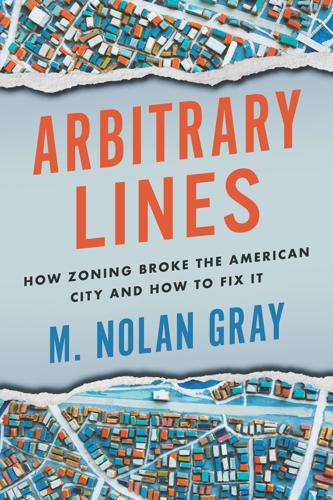
Arbitrary Lines: How Zoning Broke the American City and How to Fix It
by
M. Nolan Gray
Published 20 Jun 2022
As we briefly discussed in chapter 1, the framers of zoning saw their purpose as reducing urban densities by spreading cities out. Early planners were heavily inspired by an urban design ideal of detached single-family homes on large lots, flanked by expansive yards. Pioneered by mid-nineteenth-century suburban developments like Riverside, Illinois—designed by then-starchitects Frederick Law Olmsted and Calvert Vaux—planners envisioned a romantic, pastoralist pattern of development, shrouded in rhetoric about returning man to nature.10 It was a message perfectly optimized to appeal to an American environmentalist tradition steeped in the thinking of rural hermits like Henry David Thoreau and John Muir.

Sweden
by
Becky Ohlsen
Published 19 Jun 2009
One of the latter’s most controversial legacies is the Hötorgscity complex (built 1952–56) in central Stockholm, its five cookie-cutter office blocks blemishing the city skyline. The subsequent postmodern wave witnessed the mash-up of styles and historical influences, and the rise of contemporary starchitect Gert Wingårdh. Describing his style as ‘high organic’, the Göteborg local’s most prolific projects to date include the visionary, ecofriendly Bo01 housing project at Malmö’s Western Harbour redevelopment, Universeum (2001) in Göteborg, and the award-winning House of Sweden (2006) in Washington DC.
…
DesignTorget Götgatan (Map; 462 35 20; Götgatan 31, Södermalm); Sergels Torg (Map; 50 83 15 20; Basement, Kulturhuset, Sergels Torg) If you love good design but don’t own a Gold Amex, head to this clued-up chain, which sells the work of emerging designers alongside established denizens. * * * DESIGN & THE CITY From cult fabrics to starchitect bars, Stockholm is a design buff’s dream. Most of Sweden’s creative big guns are based here and its league of design shops, studios and galleries are the perfect crash course in crisp, clean Nordic aesthetics. A good place to start is at the permanent design exhibition at Nationalmuseum. Once you’re clued-up, pay homage at stalwart design retailer, Svenkst Tenn (Map; 670 16 00; Strandvägen 5), home to rich, floral fabrics by design legend Josef Frank.
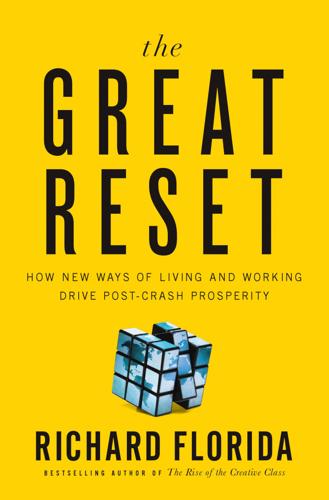
The Great Reset: How the Post-Crash Economy Will Change the Way We Live and Work
by
Richard Florida
Published 22 Apr 2010
New generations of young professionals and even some young families are moving back downtown into revitalized districts such as the city’s fabled Lafayette Park, a seventy-eight-acre development with an amazing mix of verdant open space and modern high-rises and town houses designed by one of the original “star-chitects,” Mies van der Rohe. Across the city, acre upon acre of once-useless vacant lots are being turned into vibrant urban farms. One writer even claimed that the city was turning into a veritable laboratory for innovative approaches to urban revitalization.17 So how long will it take Detroit or any other hard-hit Rust Belt city to come back?
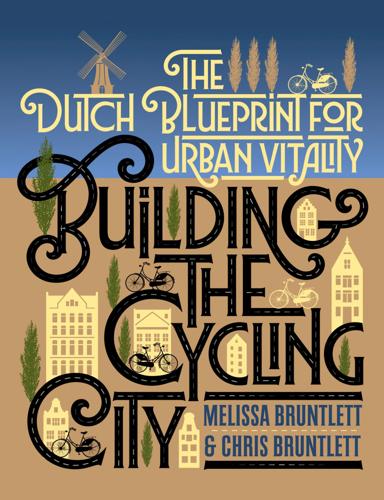
Building the Cycling City: The Dutch Blueprint for Urban Vitality
by
Melissa Bruntlett
and
Chris Bruntlett
Published 27 Aug 2018
In his 2017 book Velotopia, Fleming admits that flashy architecture and smart urban design are great, but there are many more practical reasons to build the cycling city. “We can talk about cycling being red paint, and being deliberately shocking and creating icons and branding, but that’s all take-it-or-leave-it stuff,” he argues. “You could build anything to achieve that.” Fleming identifies the danger with iconic design is that “starchitects” can’t keep repeating the same trick. Frank Gehry can’t build a Guggenheim Bilbao in every city and have the same effect. “So the purpose of Velotopia was to say, ‘Hang on, there’s actually a practical benefit here and that’s to increase connectivity in the city.’” Fleming looks for a tipping point in every region—the point when they can no longer build their way to better motorized connections.
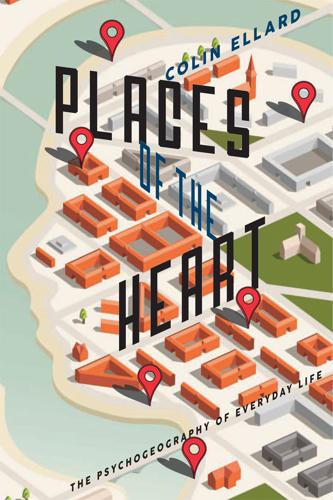
Places of the Heart: The Psychogeography of Everyday Life
by
Colin Ellard
Published 14 May 2015
Although some critics hailed the construction as a masterpiece heralding a new age of cutting-edge architectural design in the staid, Victorian landscape of Toronto, the building was decried by many as an abomination born of the city’s urgent desire to establish itself as a world-class destination by employing the services of a globally acclaimed “starchitect.” Casual passersby deplored the transformation of the public outdoor space surrounding the museum as a result of what one commentator described as a “bizarre alien turd” having been dropped into the landscape. Pedestrians avoided the open, windblown site lying under the Crystal, which appeared to teeter from above.

Bricks & Mortals: Ten Great Buildings and the People They Made
by
Tom Wilkinson
Published 21 Jul 2014
His texts are eelishly slippery, and his opinions difficult to pin down. This isn’t an uncharacteristically modest modulation of the authorial voice: by avoiding strident statements of position, Alberti made himself amenable to all potential clients. This was vital to his success because, although the Renaissance is seen as the era when starchitects were born, designers were still the servants of the money men who bought their expertise; Giovanni Rucellai never names his architect in any of his writings. A contemporary of Alberti, architect Pietro Averlino, made an impassioned plea for the recognition of his trade: The building is conceived in this manner.
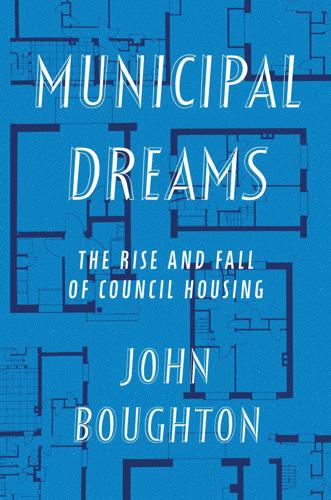
Municipal Dreams: The Rise and Fall of Council Housing
by
John Boughton
Published 14 May 2018
In this instance, that bland term concealed a £243 million scheme to demolish the existing 2,700-home estate and transfer existing council tenancies in new ‘social rented’ properties to the newly formed Faraday Housing Association. To fill the funding gap, sixty acres of the estate were to be sold to private developers and some 1,000–1,500 private homes built for sale. Overall housing densities would increase significantly. The ‘starchitect’ Will Alsop (who had worked on the Five Estates project in nearby North Peckham) was brought in to produce the master plan. There’s much to unpick here. There was an operating assumption (or perhaps it was just a useful pretext for demolition, one endorsed by Blair himself in his reference to ‘derelict concrete’) that the estate’s system-built housing was irredeemably, structurally, flawed.

Sunbelt Blues: The Failure of American Housing
by
Andrew Ross
Published 25 Oct 2021
As odd as it might sound, an entire downtown area can now be bought and traded as a single commodity.6 To craft the streetscape of Celebration’s town center, Disney executives took pains to recruit some of the most seasoned figures in architecture and community development. Its signature buildings—designed by starchitects like Michael Graves (who did the post office), Philip Johnson (town hall), Charles Moore (sales center), Robert Venturi and Denise Scott Brown (bank), and Robert Stern and Cooper Robertson (the master plan)—quickly became the object of highbrow architectural walking tours. This feature alone would have made Celebration’s downtown a highly appealing chunk of real estate, likely to appreciate in value over time if properly maintained.

Private Equity: A Memoir
by
Carrie Sun
Published 13 Feb 2024
Boone’s apartment, before he and Elisabeth bought and redecorated it, had belonged to the widow of a publishing scion. That space had been full of drama and old-world opulence, calling to mind the Renaissance, designed by someone whom the Times once called “the Architect of Illusion.” But Boone was all about the modern, the stealthily extravagant. His homes were styled by a starchitect of luxury retail. To me, though, his apartment had most of the same walls, same floors, same land—same stage—only different furniture. “No,” he said, laughing. “I’m not Donald Trump!” The day after the election the office had felt no different. No one cried. No one celebrated. It was business as usual, like it was after Brexit—I had heard from coworkers that we had been well hedged for either scenario

The Most Human Human: What Talking With Computers Teaches Us About What It Means to Be Alive
by
Brian Christian
Published 1 Mar 2011
–TWYLA THARP One of my friends, an architecture graduate student, was telling me about a famous architect—Australia’s Pritzker Prize winner Glenn Murcutt—who’s notoriously opposed to any kind of scaling-up of his output. The Pritzker jury clearly took note, saying, “In an age obsessed with celebrity, the glitz of our ‘starchitects,’ backed by large staffs and copious public relations support, dominates the headlines. As a total contrast, [Murcutt] works in a one-person office on the other side of the world … yet has a waiting list of clients, so intent is he to give each project his personal best.” Murcutt himself doesn’t find this scale-restraint, rare though it is, odd in the slightest.
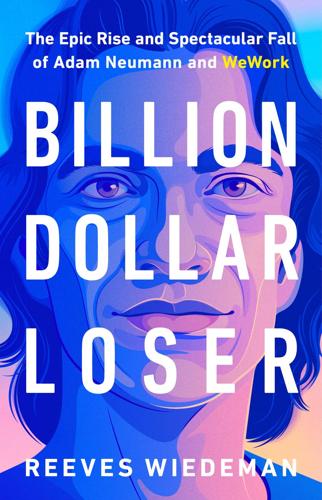
Billion Dollar Loser: The Epic Rise and Spectacular Fall of Adam Neumann and WeWork
by
Reeves Wiedeman
Published 19 Oct 2020
Michael Gross said that the company’s goal was broad: to become the arbiter for the We Generation of “ultimately where to live, ultimately where to work out, ultimately where to meet their friends for a drink after work.” Adam did him one better: much as Amazon expanded from books to the broader e-commerce world, he wanted WeWork to expand into “the larger category of life.” In 2018, WeWork hired Bjarke Ingels, the youthful Danish starchitect, in the largely ceremonial role of chief architect, a position meant to help thought-lead Neumann’s ambitions of expanding beyond the walls of WeWork’s locations. “In 2018, we want to have an impact on the buildings we occupy,” Adam said, in a statement announcing Ingels’s hiring. “In 2019, it will be the neighborhoods WeWork is part of, and by 2020, the cities we live in.”
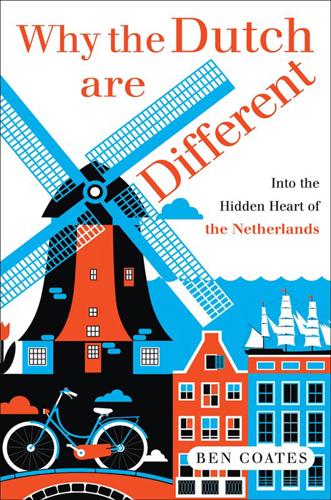
Why the Dutch Are Different: A Journey Into the Hidden Heart of the Netherlands: From Amsterdam to Zwarte Piet, the Acclaimed Guide to Travel in Holland
by
Ben Coates
Published 23 Sep 2015
The sun was setting behind the harp-like Erasmusbrug, and I sat with my legs hanging over a high wall above the Maas, close to the spot where I had disembarked from the ferry a couple of months earlier. After a sombre few hours in Westerbork and the memorial service before that, it felt strange to be back in the energetic heart of the city. On the opposite bank of the river, cranes were busily completing the final stages of the construction of a triptych of office towers designed by local ‘starchitect’ Rem Koolhaas. Cloaked in gunmetal-coloured glass, the upper floors of each tower were slightly offset from the vertical, like stacks of Jenga bricks with the top layers shuffled carefully out of alignment. I thought the buildings fairly hideous, but they were perfect examples of the post-war school of Dutch architecture that emphasised concept over context.
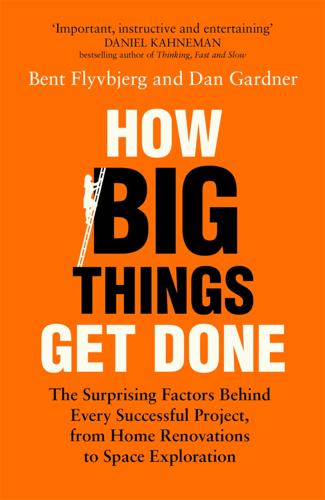
How Big Things Get Done: The Surprising Factors Behind Every Successful Project, From Home Renovations to Space Exploration
by
Bent Flyvbjerg
and
Dan Gardner
Published 16 Feb 2023
A gallery of contemporary art in Bilbao, Spain, it is a spectacular, glowing building unlike anything seen before, as much of an artwork as those on display inside. Understandably, the Guggenheim Bilbao is often portrayed as the product of nothing more than the architect’s imagination and genius. More cynical observers see it as an example of the “starchitect” phenomenon, in which architects give free rein to their inflated egos and idiosyncrasies. Both depictions are wrong. When Gehry was first approached in the 1990s to consider the project, he flew to Bilbao and met with officials from the government of the Basque Country, an autonomous region in northern Spain.
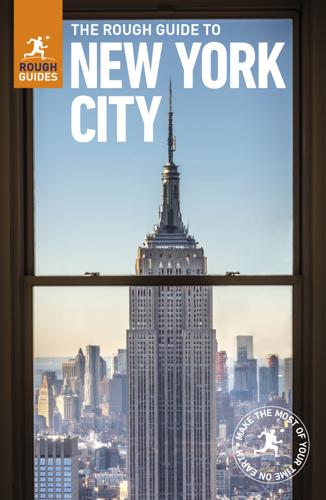
The Rough Guide to New York City
by
Rough Guides
Published 21 May 2018
The plan was dubbed pejoratively the “Ground Zero mosque” by anti-Islamic protestors who felt the site would be an insult to 9/11 victims (though actual relations of those killed were divided on the issue). El-Gamal eventually modified his plans, and the site is now slated to become a three-storey Islamic museum designed by “starchitect” Jean Nouvel (due to open in late 2018). The Oculus 185 Greenwich St (also 50 Church St) • Mall open Mon–Sat 10am–9pm, Sun 11am–7pm • 212 284 9982 • Subway A, C, #2, #3, #4, #5 to Fulton St; E to World Trade Center; R, W to Cortlandt St; #1 to Rector St A striking, bone-white, 160ft-tall edifice by Santiago Calatrava, The Oculus opened next to 3 World Trade Center in 2016, its two spiky steel ribs resembling a giant porcupine.
…
Individuals or smaller groups should call Billy Mitchell, the tour director (212 531 5337), and he will try to add you to the next scheduled group. Manhattanville W 125th St to 133rd St, between Broadway and Twelfth Ave • manhattanville.columbia.edu Columbia University’s new Manhattanville campus opened in 2017, essentially a massive showcase for starchitect Renzo Piano. Piano designed the hyper-cool Jerome L. Greene Science Center, as well as the Lenfest Center for the Arts, which will host exhibitions, performances, readings and lectures, most open to the public. The Nash Building, 3280 Broadway at W 133rd St, contains the campus historical interpretive exhibit (with displays charting the history of the area) on the ground floor. 135th Street and around Subway B, C, #2, #3 to 135th St The blocks north of 125th Street contain little of interest until you reach 135th Street, the historic heart of Harlem; though the commercial pulse of the neighbourhood has drifted south over the years, back in the 1920s and 1930s this was where most of the action took place (Harry Belafonte and James Baldwin grew up around here).

Priceless: The Myth of Fair Value (And How to Take Advantage of It)
by
William Poundstone
Published 1 Jan 2010
It paid over $1,700 per square foot for its Rem Koolhaas–designed store in SoHo and is forking over equally stratospheric rents. It would not devote floor space to goods that hardly ever sell unless there was a reason for it. Trade-off contrast is part of the cost of doing business, like advertising or window displays or “starchitect” designs. It’s not unusual to find items similar to the high-priced anchor selling for a tenth as much. Anyone who can’t swing that can always try the $300 sunglasses. Or the $110 mobile phone charm. The British Prada website hints at where the money is (online, at any rate). It offers 10 makes of women’s shoes, 23 handbags, and 54 “gifts”—trinkets like keychains, bracelet charms, and golf tee holders.

The Human City: Urbanism for the Rest of Us
by
Joel Kotkin
Published 11 Apr 2016
Rather than being tied to tradition, religion, and family, Singapore is increasingly dominated by an ideology that former foreign minister S. Rajaratnam labeled “moneytheism.”128 These non-specific, unmoored values find physical expression in the architecture that dominates many global cities. As you travel these places, you see the same structures, be it from Frank Gehry or some other “starchitect,” in myriad cities. Increasingly, city skylines and waterfront developments appear remarkably similar—from London’s Docklands to Tokyo’s waterfront developments to Shanghai’s Pudong.129 By appealing to cosmopolitan tastes, these global centers are becoming what architect Rem Koolhaas labeled “the generic city.”
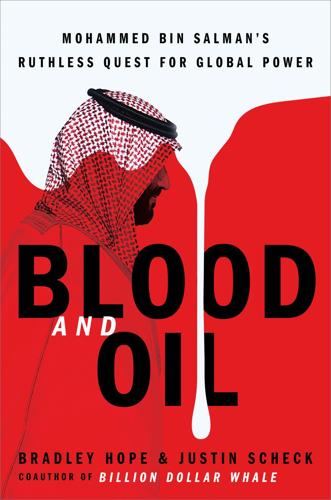
Blood and Oil: Mohammed Bin Salman's Ruthless Quest for Global Power
by
Bradley Hope
and
Justin Scheck
Published 14 Sep 2020
Neither Badr nor Mohammed would tell a soul anything about it, no matter how many times a visiting billionaire or art consultant tried to ask during a private moment. Whereas Abu Dhabi had taken an approach of bringing art into the UAE via its relationship with the Louvre, Saudi Arabia’s consultants came up with a strategy that propped up its size, diversity, and history. Rather than have a “starchitect” design a big, impressive museum to put it on the map, the country would focus on smaller museums and archaeological restorations. Some would be devoted to just one thing, such as a Museum of Incense celebrating the love of perfume and the legendary trade routes through the kingdom. Building such attractions represented a huge change in a country whose Wahhabist religious establishment viewed museums, especially those displaying antiquities, as facilitating idol worship.
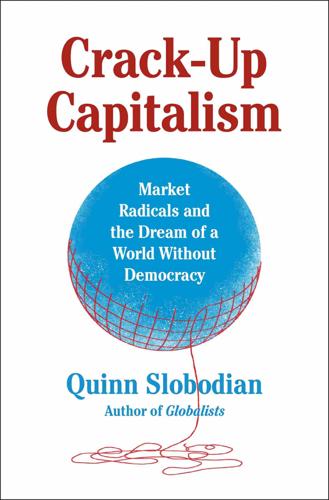
Crack-Up Capitalism: Market Radicals and the Dream of a World Without Democracy
by
Quinn Slobodian
Published 4 Apr 2023
In 1985, the opening scene from The Long Good Friday came to life as maquettes were unveiled for a complex in London’s Docklands atop the old West India Docks on the Isle of Dogs. Covering seventy-one acres, with ten million square feet of office space, the original plan included not one but three of the tallest skyscrapers in Europe and was billed as the largest real estate development in the world. The project brought together the starchitect studio of Skidmore, Owings & Merrill—which had built the Sears Tower in Chicago the decade before—with I. M. Pei, whose Bank of China Tower had just broken ground in Hong Kong. It was called Canary Wharf after the warehouse that once held fruit shipped from the Canary Islands.39 The architects claimed they were gesturing to the traditional urban fabric of London.
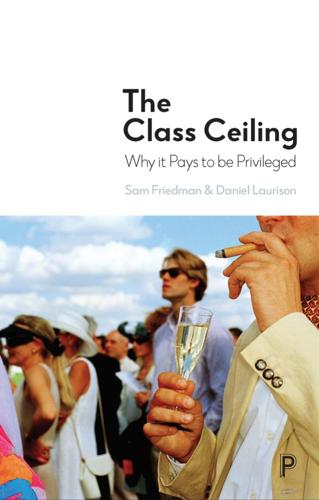
The Class Ceiling: Why It Pays to Be Privileged
by
Sam Friedman
and
Daniel Laurison
Published 28 Jan 2019
The firm is now relatively large for an architectural practice, employing around 100 people, the vast majority of whom are based in London.17 81 The Class Ceiling The firm principally works in defence, education, healthcare, transport and residential development. It has been very successful in recent years, leading on a number of high-profile airport and bus terminal projects, and staff numbers have expanded rapidly. However, as a firm with a strong ‘delivery’ focus, it lacks both the cultural prestige of established ‘starchitect’-led practices, such as Fosters, or the professional cachet of design-led boutique studios. Employing many Architectural Assistants yet to complete all of their professional qualifications, Coopers is a young office, with an average age of around 30 compared with 46 for architecture nationally.
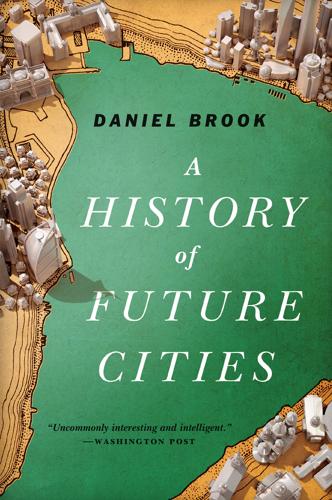
A History of Future Cities
by
Daniel Brook
Published 18 Feb 2013
To preservationists locally and at UNESCO, the unity of the city’s church spire–dominated skyline would be destroyed by inserting the tallest building in Europe along the Neva. The design for the Gazprom tower was chosen in 2006 through an international competition marred by controversy. International starchitects Sir Norman Foster and Rafael Viñoly, who had been enlisted as judges, resigned from the committee in protest. While neither architect explained his reasons publicly, speculation was rampant that they quit over preservation concerns as well as pressure from Mayor Matviyenko to pick her favorite design, that of London-based architecture firm, RMJM.
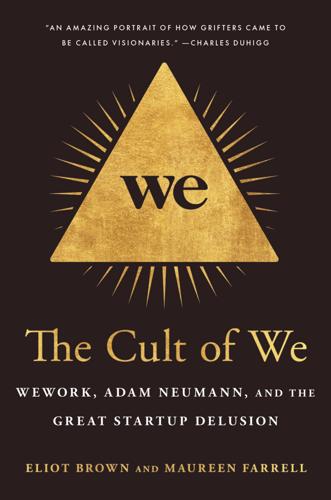
The Cult of We: WeWork, Adam Neumann, and the Great Startup Delusion
by
Eliot Brown
and
Maureen Farrell
Published 19 Jul 2021
Perhaps the boldest idea was starting a new elementary school. In this case, the project’s mastermind was Rebekah Neumann, who told Bloomberg in 2017 that the concept was to raise “conscious global citizens” who “understand what their superpowers are.” The company commissioned Bjarke Ingels, the energetic Danish “starchitect” who was designing a new headquarters for Google, to conceive its inaugural space. WeWork’s board was skeptical but let the deals go through. While the board was pliant in WeWork’s early years, SoftBank had changed the whole dynamic. With two new board seats, SoftBank’s presence diluted the influence of old directors like Bruce Dunlevie of Benchmark.

Fodor's Essential Belgium
by
Fodor's Travel Guides
Published 23 Aug 2022
As night falls and its gilded details shimmer under the lights, grab a warm waffle and just look around you in awe. Find your comic-book muse. The city celebrates its comic-book heroes right. Around its streets are endless murals to discover, and its museum dedicated to the ninth art offers great insight into an art form dear to Belgium. See Art Nouveau wonders. At the turn of the century, “starchitect” Victor Horta transformed the city while honing his vision of Art Nouveau. Witness his first steps in Schaerbeek and explore his legacy in Ixelles and Saint-Gilles. Treat yourself. Beer, chocolate, and frites—Brussels is famous for all three. Wander a lambic brewery, pick out pralines from a local chocolatier, and ponder which of the 30 or so sauces in which to dip your frites.

Lonely Planet Southern Italy
by
Lonely Planet
Sicily’s most celebrated baroque architect, however, was be Giovanni Battista Vaccarini (1702–68). Trained in Rome, Vaccarini would dedicate three decades of his life to rebuilding earthquake-stricken Catania, using the region’s volcanic black rock to dramatic effect in Piazza del Duomo. His reputation would see him join forces with Neapolitan starchitect Luigi Vanvitelli (1700–73) in the creation of Italy’s gargantuan baroque epilogue, the Reggia di Caserta, 30km north of Naples. Chiesa del Gesù Nuovo, Naples | INU/SHUTTERSTOCK © ARCHITECTURE SPEAK: 101 Do you know your transept from your triclinium? Demystify some common architectural terms with the following bite-size list: Apse Usually a large recess or niche built on a semicircular or polygonal ground plan and vaulted with a half dome.
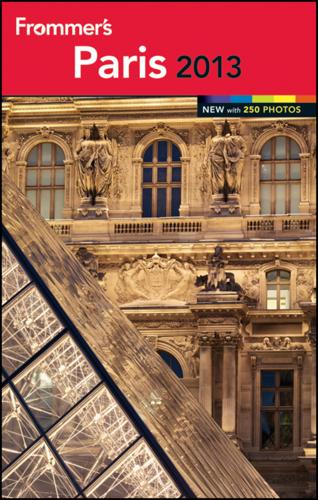
Frommer's Paris 2013
by
Kate van Der Boogert
Published 24 Sep 2012
When the alcohol has flowed for an hour or two, most punters give in to the aroma of juicy burgers and frites (from 9€) wafting from the kitchen. Open daily 8am–2am. 135 rue de Montmartre, 75002. 01-40-41-99-90. Metro: Bourse. Experimental Cocktail Club This cosmopolitan lounge has the feel of a retro speakeasy. The cocktails here are spot-on and the crowd is fashionable—starchitect Philippe Starck and actor Adrian Grenier have been spotted sipping drinks here late into the evening. Drinks start at 12.50€. Open daily from 6pm to 2am, until 5am Friday and Saturday. 37 rue St-Sauveur, 2e. www.experimentalcocktailclub.com. 01-45-08-88-09. Métro: Sentier. Le Bar (Hôtel Plaza Athénée) This classy, historic joint is all glamour and fabulousness with a shockingly 21st-century decor.
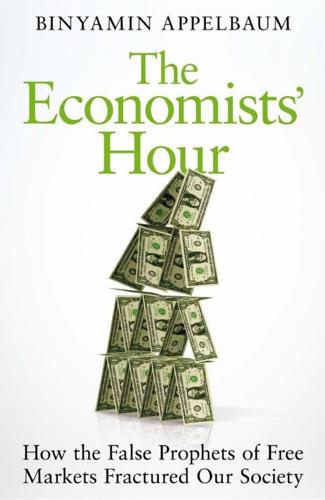
The Economists' Hour: How the False Prophets of Free Markets Fractured Our Society
by
Binyamin Appelbaum
Published 4 Sep 2019
People called it the Rust Belt.87 That was also the year Youngstown, Ohio, lost its carousel. The grand merry-go-round, a signature attraction at the local amusement park for sixty years, was sold at auction when the park closed; in time, it found a new home on the New York waterfront, in a transparent jewel box by the French starchitect Jean Nouvel. Reagan swept to reelection in 1984, but the political pressure to arrest the decline of American manufacturing continued to build. A new Treasury secretary, James Baker, persuaded Reagan to treat the value of the dollar as a matter of policy; Baker began to seek concessions from Japan.

Aerotropolis
by
John D. Kasarda
and
Greg Lindsay
Published 2 Jan 2009
The task of designing an instant city fell to Gale’s architects at Kohn Pedersen Fox, whose lengthy résumé includes supertall skyscrapers and dozens of corporate headquarters, but nothing on the order of New Songdo. The principal in charge of the project is Jamie von Klemperer, whose willingness to explain himself in simple English runs counter to flashier “starchitects.” Previous attempts at conceiving instant cities had been hobbled by their own utopianism, he explained one afternoon at KPF’s Manhattan offices, as we watched his assistants carve matchstick skyscrapers out of Styrofoam. In trying to draft the perfect city, he said, architects had produced inhuman ones.

Fodor's Essential Israel
by
Fodor's Travel Guides
Published 2 Aug 2023
Pros: neighborhood feel; reasonable rates; rooftop terrace. Cons: no restaurant; no pool; no parking. D Rooms from: $168 E 20 Ibn Ezra St., Center City P 02/563–3344 wwww.jerusalem-hotel.co.il a 28 rooms X Free Breakfast. H Mamilla Hotel $$$$ | HOTEL | With clever and soaring architectural flourishes by starchitect Moshe Safdie and a restrained yet luxurious modern interior design by Piero Lissoni, the Mamilla is a sleek and comfortable haven with bars and restaurants that appeal to locals and travelers alike. Pros: stunning, contemporary design; central location; pristine service. Cons: Happy Fish restaurant is uncharacteristically mediocre; street noise; Akasha Spa is across the street, not part of the hotel.

Western USA
by
Lonely Planet
In the 1950s and ’60s, Palm Springs (population 44,500), some 100 miles east of LA, was the swinging getaway of Sinatra, Elvis and other big stars. Once the Rat Pack packed it in, however, Palm Springs surrendered to retirees in golf clothing. In the 1990s, a new generation rediscovered the city’s retro-chic charms: kidney-shaped pools, starchitect bungalows, vintage boutique hotels, and piano bars serving perfect martinis. Today retirees mix comfortably with hipsters and a significant gay and lesbian contingent. Sights & Activities Palm Springs is the principal city of the Coachella Valley, a string of desert towns ranging from ho-hum Cathedral City to glamtastic Palm Desert, all linked by Hwy 111.

Coastal California Travel Guide
by
Lonely Planet
It relaunched in 2013–14 with chic new restaurants like Umami Burger, the Anaheim Brewery ( GOOGLE MAP ; www.anaheimbrew.com; 336 S Anaheim Blvd; h5-9pm Tue-Thu, 5-11pm Fri, noon-11pm Sat, 1-7pm Sun), an evolving collection of shops and a park for events. About a quarter-mile from here is Center Street ( GOOGLE MAP ; www.centerstreetanaheim.com; W Center St), a quietly splashy redeveloped neighborhood with an ice rink designed by starchitect Frank Gehry, and a couple of blocks of hip shops. Dining offerings include the fabulous food hall of the Packing House ( GOOGLE MAP ; %714-533-7225; www.anaheimpackingdistrict.com; 440 S Anaheim St; hopens 9am, closing hours vary), and the creative vegan dishes at Healthy Junk ( GOOGLE MAP ; %714-772-5865; www.thehealthyjunk.com; 201 Center St Promenade; mains $4-10; h10am-9pm Mon-Fri, 11am-9pm Sat, 11am-5pm Sun; v). 5Eating From stroll-and-eat Mickey-shaped pretzels ($4) and jumbo turkey legs ($10) to deluxe, gourmet dinners (sky's the limit), there's no shortage of eating options, though mostly pretty expensive and targeted to mainstream tastes.

USA Travel Guide
by
Lonely, Planet
In the 1950s and ’60s, Palm Springs (population 44,500), some 100 miles east of LA, was the swinging getaway of Sinatra, Elvis and other big stars. Once the Rat Pack packed it in, however, Palm Springs surrendered to retirees in golf clothing. In the 1990s, a new generation rediscovered the city’s retro-chic charms: kidney-shaped pools, starchitect bungalows, vintage boutique hotels, and piano bars serving perfect martinis. Today retirees mix comfortably with hipsters and a significant gay and lesbian contingent. Sights & Activities Palm Springs is the principal city of the Coachella Valley, a string of desert towns ranging from ho-hum Cathedral City to glamtastic Palm Desert, all linked by Hwy 111.
…
ARCHITECTURE In the 21st century, computer technology and innovations in materials and manufacturing allow for curving, asymmetrical buildings once considered impossible, if not inconceivable. Architects are being challenged to ‘go green,’ and the creativity unleashed is riveting, transforming skylines and changing the way Americans think about their built environments. The public’s architectural taste remains conservative, but never mind: avant-garde ‘starchitects’ are revising urban landscapes with radical visions that the nation will catch up with – one day. Art in Out-of-the-Way Places » Marfa, TX » Santa Fe, NM » Traverse City, MI » Park City, UT » Bellingham, WA » Beacon, NY » Provincetown, MA The Colonial Period Perhaps the only lasting indigenous influence on American architecture has been the adobe dwellings of the Southwest.

Germany Travel Guide
by
Lonely Planet
Johanniskirche CHURCH (510 933; www.johanniskirche-zittau.de; Johannisplatz 1; tower adult/concession €1.50/1; noon-6pm Mon-Fri, 10am-4pm Sat & Sun Apr-Oct, 10am-4.30pm Mon-Fri, 10am-4pm Sat & Sun Nov-Mar) Zittau’s grand Church of St John has medieval roots but the current version was consecrated in 1837 and designed by Prussian starchitect Karl Friedrich Schinkel, who added the wooden coffered ceiling, the neo-Gothic north tower and the baptismal font. The south tower can be climbed for sweeping views of the mountains. Sleeping & Eating Hotel Dreiländereck HOTEL €€ (5550; www.hotel-dle.de; Bautzener Strasse 9; d €90; ) This one-time brewery on Zittau’s pedestrianised commercial strip is a solid pick, with warmly furnished rooms dressed in green and gold hues.

Italy
by
Damien Simonis
Published 31 Jul 2010
In 2008, the city’s sporadic garbage-disposal crisis flared up again, leading frustrated residents to set fire to uncollected rubbish in the streets. More promising has been the recent inauguration of a major theatre festival, a still-under-construction high-speed rail terminal by British-Iraqi starchitect Zaha Hadid and a planned revamp of Pompeii’s train stations by prolific US architect Peter Eisenman. * * * OUR TOP FIVE FILM LOCATIONS IN CAMPANIA Naples’ airy Piazza del Gesù Nuovo, where acting great Sergio Solli makes his anything-but-menacing phone threats in No Grazie, Il Caffè Mi Rende Nervoso (1982).